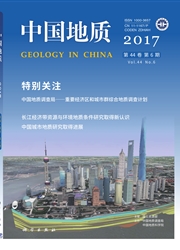

 中文摘要:
中文摘要:
针对羌塘盆地地表地质条件复杂,地震资料信噪比低,取得高质量的地震剖面存在很大困难等问题,中国地质调查局在羌塘布设了总长约52km的试验剖面,初步摸索出一套适用于羌塘地区地震资料采集与处理的方法技术。处理后的地震叠加剖面上反射信息丰富,揭示出盆地基底以上各构造层的空间展布特征,为查明构造圈闭和构造界面,确定地层的组合等方面,提供了高质量数据。文中在对地震反射特征分析的基础上对两条剖面显示的盆地基底的埋深、形态等方面进行了初步研究。
 英文摘要:
英文摘要:
It is hard to acquire high-quality seismic sections in the Qiangtang basin because of complex surface geological conditions and a low signal-noise ratio. In regard to this problem, the authors deployed test seismic profiles with a total length of-52 km in Qiangtang and preliminarily developed a set of seismic data acquisition and processing techniques suited to the features of this area. The two processed stacking profiles show informative reflection and reveal the features of spatial distribution of various structural layers above the basement, which provides high-quality data for ascertaining the structural traps and tectonic boundaries and determining the stratigraphic grouping. On the basis of an analysis of the seismic reflection characters, a preliminary study of the burial depth and morphology of the crystalline basement of the Qiangtang basin displayed by the two profiles has been undertaken.
 同期刊论文项目
同期刊论文项目
 同项目期刊论文
同项目期刊论文
 期刊信息
期刊信息
